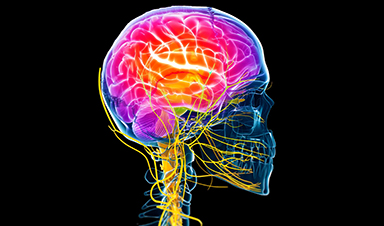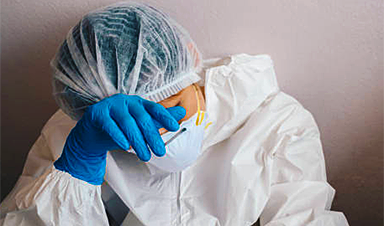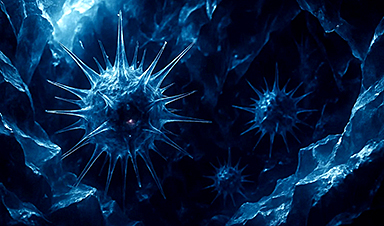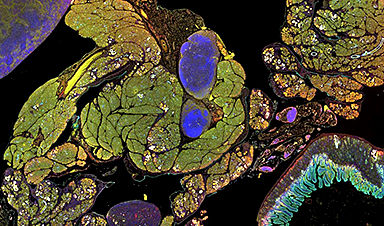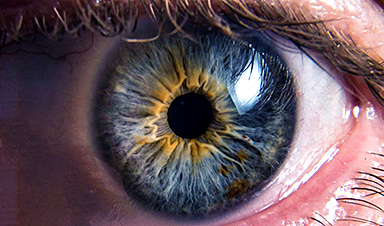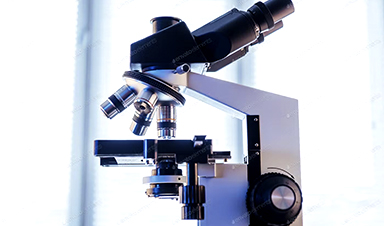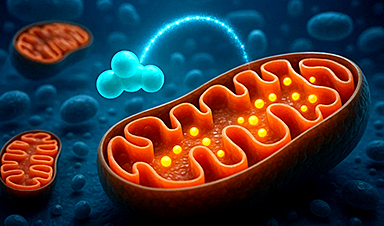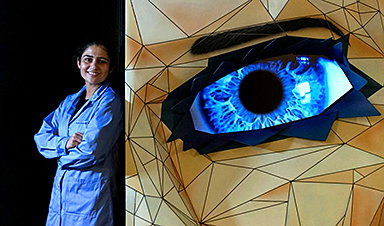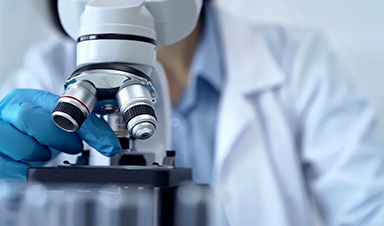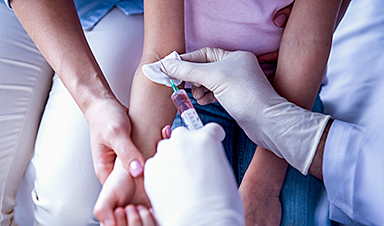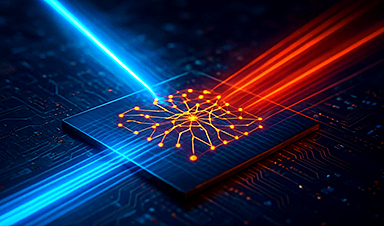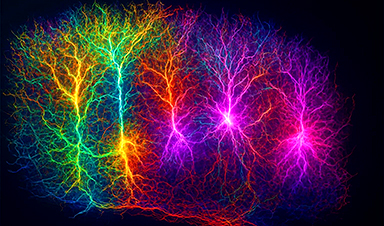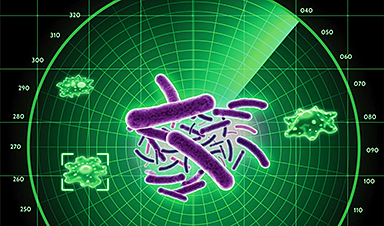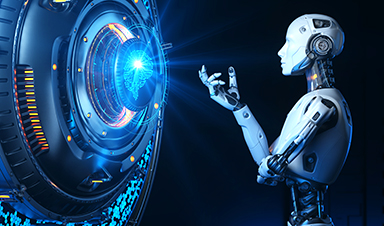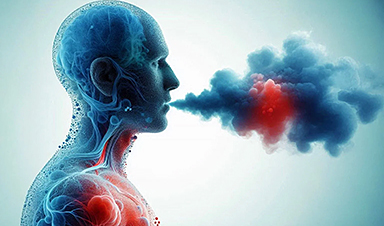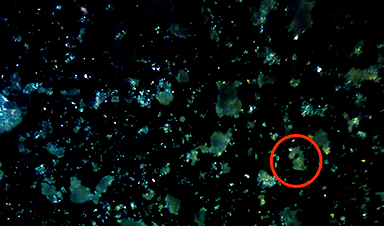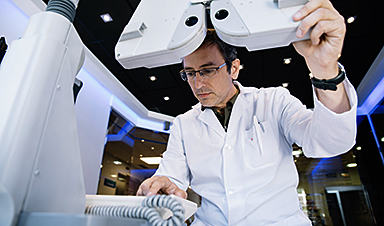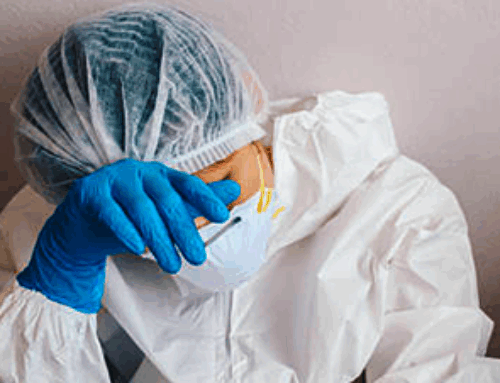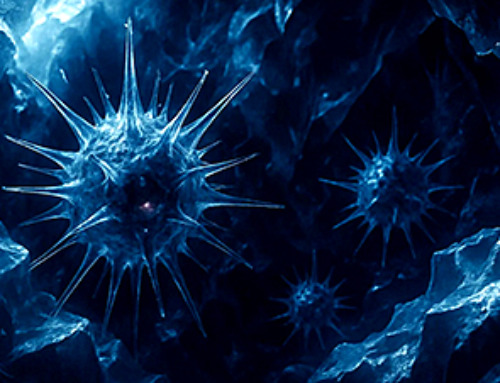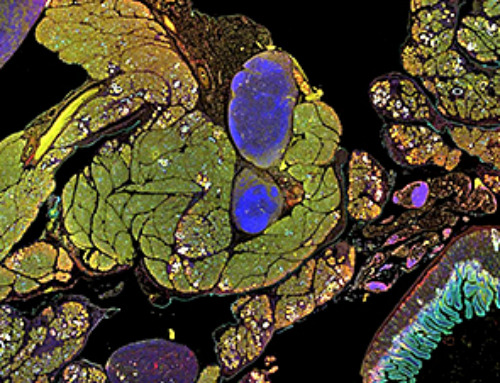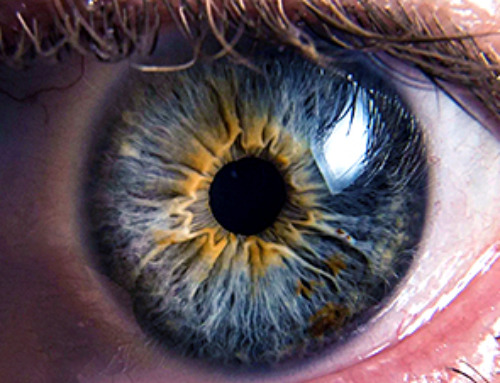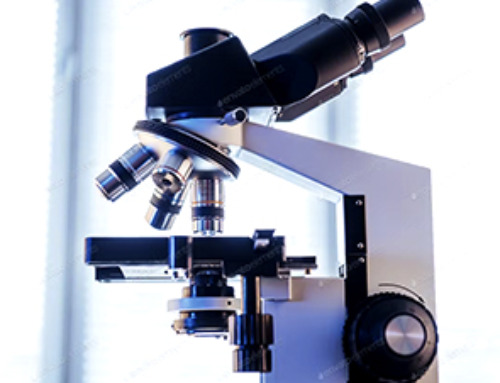Researchers at the University of California San Diego discovered that an unusually large brain could be the first sign of autism, potentially detectable in as early as the first trimester.
Some children with autism face severe, enduring challenges including developmental delays, social difficulties, and possibly an inability to speak. Meanwhile, others may have milder symptoms that lessen over time.
The disparity in outcomes has been a mystery to scientists, until now. A new study, published in Molecular Autism by researchers at the University of California San Diego, is the first to shed light on the matter. Among its findings: The biological basis for these two subtypes of autism develops in utero.
Researchers used blood-based stem cells from 10 toddlers, ages 1 through 4, with idiopathic autism (in which no single-gene cause was identified) to create brain cortical organoids (BCOs), or models of the fetal cortex. They also created BCOs from six neurotypical toddlers.
Findings on Brain Development
Often referred to as gray matter, the cortex lines the outside of the brain. It holds tens of billions of nerve cells and is responsible for essential functions like consciousness, thinking, reasoning, learning, memory, emotions and sensory functions.
Among their findings: The BCOs of toddlers with autism were significantly larger — roughly 40 percent — than those of neurotypical controls, according to two rounds of study performed in different years (2021 and 2022). Each round involved the creation of hundreds of organoids from each patient.
The researchers also found that abnormal BCO growth in toddlers with autism correlated with their disease presentation. The larger a toddler’s BCO size, the more severe their social and language symptoms were later in life, and the larger their brain structure on MRI. Toddlers with excessively enlarged BCOs showed greater-than-typical volume in social, language, and sensory brain areas when compared to neurotypical peers.
“The bigger the brain, the better isn’t necessarily true,” said Alysson Muotri, Ph.D., director of the Sanford Stem Cell Institute (SSCI) Integrated Space Stem Cell Orbital Research Center at the university. The SSCI is directed by Catriona Jamieson, M.D., Ph.D., a leading physician-scientist in cancer stem cell biology whose research explores the fundamental question of how space alters cancer progression.
“We found that in the brain organoids from toddlers with profound autism, there are more cells and sometimes more neurons — and that’s not always for the best,” added Muotri, who is also a professor in the Departments of Pediatrics and Cellular and Molecular Medicine at the UC San Diego School of Medicine.
What’s more, the BCOs of all children with autism, regardless of severity, grew roughly three times faster than those of neurotypical children. Some of the largest brain organoids — from children with the most severe, persistent cases of autism — also saw the accelerated formation of neurons. The more severe a toddler’s autism, the quicker their BCO grew — sometimes to the point of developing an excess of neurons.
Unique Aspects of the Study
Eric Courchesne, Ph.D., a professor in the School of Medicine’s Department of Neurosciences who co-led the research with Muotri, called the study “one of a kind.” Matching data on children with autism — including their IQs, symptom severity, and imaging like MRIs — with their corresponding BCOs or similar stem cell-derived models makes an incredible amount of sense, he said. But oddly enough, such research hadn’t been undertaken ahead of their work.
“The core symptoms of autism are social affective and communication problems,” said Courchesne, who also serves as co-director of the UC San Diego Autism Center of Excellence. “We need to understand the underlying neurobiological causes of those challenges and when they begin. We are the first to design an autism stem cell study of this specific and central question.”
It’s long been assumed that autism, a complex pool of progressive disorders, begins prenatally and involves multiple stages and processes. While no two people with autism are like — just as no two neurotypical people are — those with the neurodevelopmental condition can generally be grouped into two categories: those who have severe social struggles and require lifelong care, and may even be nonverbal, and those who have a milder version of the condition who eventually develop good language skills and social relationships.
Scientists haven’t been able to ascertain why at least two groups of individuals with autism exist. They also haven’t been able to prenatally identify children with autism, let alone predict how severe their condition might be.
Now that Courchesne and Muotri have established that brain overgrowth begins in the womb, they hope to pinpoint its cause, in a bid to develop a therapy that might ease intellectual and social functioning for those with the condition.
Reference: “Embryonic origin of two ASD subtypes of social symptom severity: the larger the brain cortical organoid size, the more severe the social symptoms” by Eric Courchesne, Vani Taluja, Sanaz Nazari, Caitlin M. Aamodt, Karen Pierce, Kuaikuai Duan, Sunny Stophaeros, Linda Lopez, Cynthia Carter Barnes, Jaden Troxel, Kathleen Campbell, Tianyun Wang, Kendra Hoekzema, Evan E. Eichler, Joao V. Nani, Wirla Pontes, Sandra Sanchez Sanchez, Michael V. Lombardo, Janaina S. de Souza, Mirian A. F. Hayashi and Alysson R. Muotri, 25 May 2024, Molecular Autism.
DOI: 10.1186/s13229-024-00602-8
Co-authors of the study include Vani Taluja, Sanaz Nazari, Caitlin M. Aamodt, Karen Pierce, Kuaikuai Duan, Sunny Stophaeros, Linda Lopez, Cynthia Carter Barnes, Jaden Troxel, Kathleen Campbell, Tianyun Wang, Kendra Hoekzema, Evan E. Eichler, Joao V. Nani, Wirla Pontes, Sandra Sanchez Sanchez, Michael V. Lombardo and Janaina S. de Souza.
This work was supported by grants from the National Institute of Deafness and Communication Disorders, the National Institutes of Health, the California Institute for Regenerative Medicine and the Hartwell Foundation. We thank the parents of the toddlers in San Diego whose stem cells were reprogrammed to BCOs.
News
Studies detail high rates of long COVID among healthcare, dental workers
Researchers have estimated approximately 8% of Americas have ever experienced long COVID, or lasting symptoms, following an acute COVID-19 infection. Now two recent international studies suggest that the percentage is much higher among healthcare workers [...]
Melting Arctic Ice May Unleash Ancient Deadly Diseases, Scientists Warn
Melting Arctic ice increases human and animal interactions, raising the risk of infectious disease spread. Researchers urge early intervention and surveillance. Climate change is opening new pathways for the spread of infectious diseases such [...]
Scientists May Have Found a Secret Weapon To Stop Pancreatic Cancer Before It Starts
Researchers at Cold Spring Harbor Laboratory have found that blocking the FGFR2 and EGFR genes can stop early-stage pancreatic cancer from progressing, offering a promising path toward prevention. Pancreatic cancer is expected to become [...]
Breakthrough Drug Restores Vision: Researchers Successfully Reverse Retinal Damage
Blocking the PROX1 protein allowed KAIST researchers to regenerate damaged retinas and restore vision in mice. Vision is one of the most important human senses, yet more than 300 million people around the world are at [...]
Differentiating cancerous and healthy cells through motion analysis
Researchers from Tokyo Metropolitan University have found that the motion of unlabeled cells can be used to tell whether they are cancerous or healthy. They observed malignant fibrosarcoma cells and [...]
This Tiny Cellular Gate Could Be the Key to Curing Cancer – And Regrowing Hair
After more than five decades of mystery, scientists have finally unveiled the detailed structure and function of a long-theorized molecular machine in our mitochondria — the mitochondrial pyruvate carrier. This microscopic gatekeeper controls how [...]
Unlocking Vision’s Secrets: Researchers Reveal 3D Structure of Key Eye Protein
Researchers have uncovered the 3D structure of RBP3, a key protein in vision, revealing how it transports retinoids and fatty acids and how its dysfunction may lead to retinal diseases. Proteins play a critical [...]
5 Key Facts About Nanoplastics and How They Affect the Human Body
Nanoplastics are typically defined as plastic particles smaller than 1000 nanometers. These particles are increasingly being detected in human tissues: they can bypass biological barriers, accumulate in organs, and may influence health in ways [...]
Measles Is Back: Doctors Warn of Dangerous Surge Across the U.S.
Parents are encouraged to contact their pediatrician if their child has been exposed to measles or is showing symptoms. Pediatric infectious disease experts are emphasizing the critical importance of measles vaccination, as the highly [...]
AI at the Speed of Light: How Silicon Photonics Are Reinventing Hardware
A cutting-edge AI acceleration platform powered by light rather than electricity could revolutionize how AI is trained and deployed. Using photonic integrated circuits made from advanced III-V semiconductors, researchers have developed a system that vastly [...]
A Grain of Brain, 523 Million Synapses, Most Complicated Neuroscience Experiment Ever Attempted
A team of over 150 scientists has achieved what once seemed impossible: a complete wiring and activity map of a tiny section of a mammalian brain. This feat, part of the MICrONS Project, rivals [...]
The Secret “Radar” Bacteria Use To Outsmart Their Enemies
A chemical radar allows bacteria to sense and eliminate predators. Investigating how microorganisms communicate deepens our understanding of the complex ecological interactions that shape our environment is an area of key focus for the [...]
Psychologists explore ethical issues associated with human-AI relationships
It's becoming increasingly commonplace for people to develop intimate, long-term relationships with artificial intelligence (AI) technologies. At their extreme, people have "married" their AI companions in non-legally binding ceremonies, and at least two people [...]
When You Lose Weight, Where Does It Actually Go?
Most health professionals lack a clear understanding of how body fat is lost, often subscribing to misconceptions like fat converting to energy or muscle. The truth is, fat is actually broken down into carbon [...]
How Everyday Plastics Quietly Turn Into DNA-Damaging Nanoparticles
The same unique structure that makes plastic so versatile also makes it susceptible to breaking down into harmful micro- and nanoscale particles. The world is saturated with trillions of microscopic and nanoscopic plastic particles, some smaller [...]
AI Outperforms Physicians in Real-World Urgent Care Decisions, Study Finds
The study, conducted at the virtual urgent care clinic Cedars-Sinai Connect in LA, compared recommendations given in about 500 visits of adult patients with relatively common symptoms – respiratory, urinary, eye, vaginal and dental. [...]
